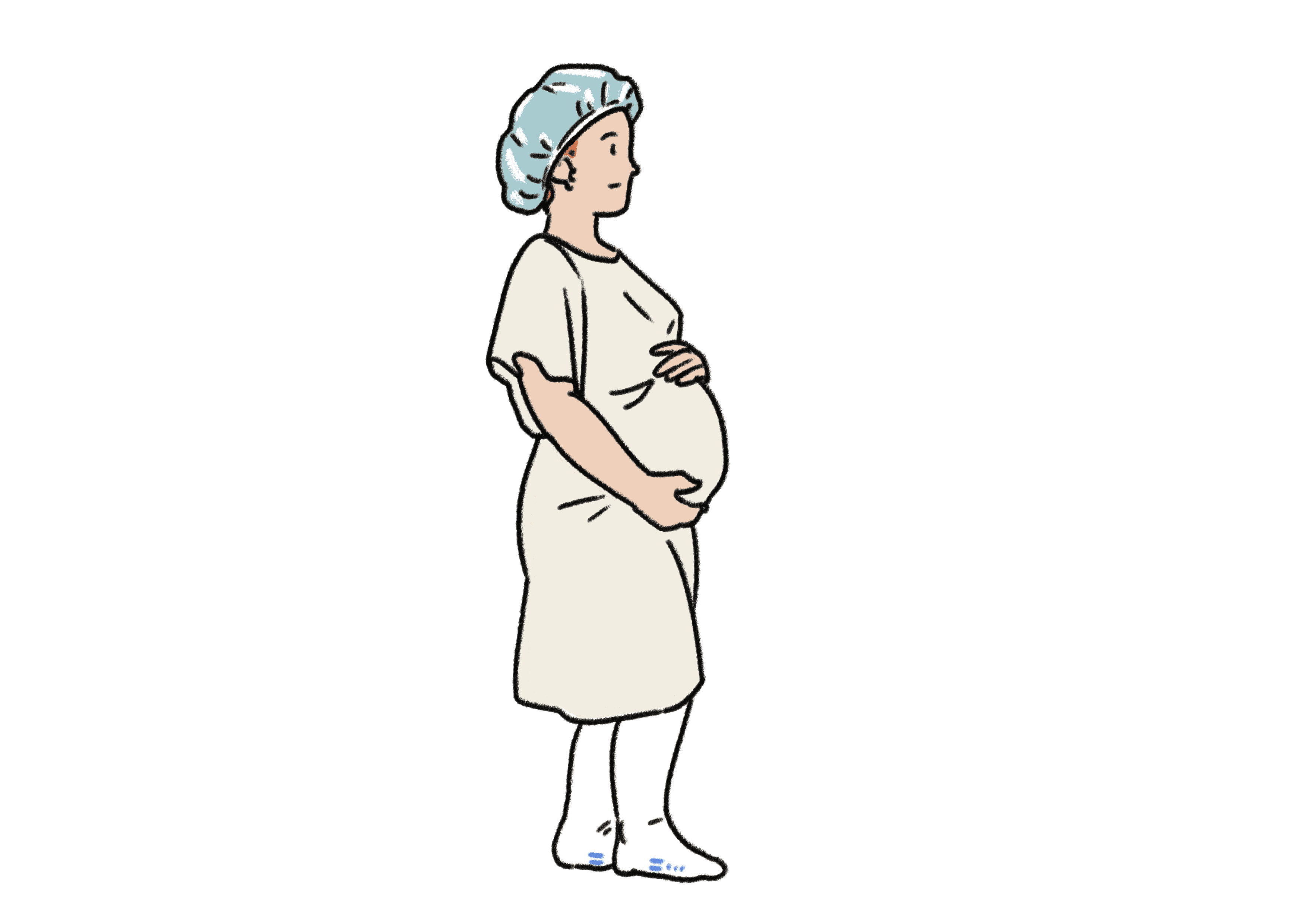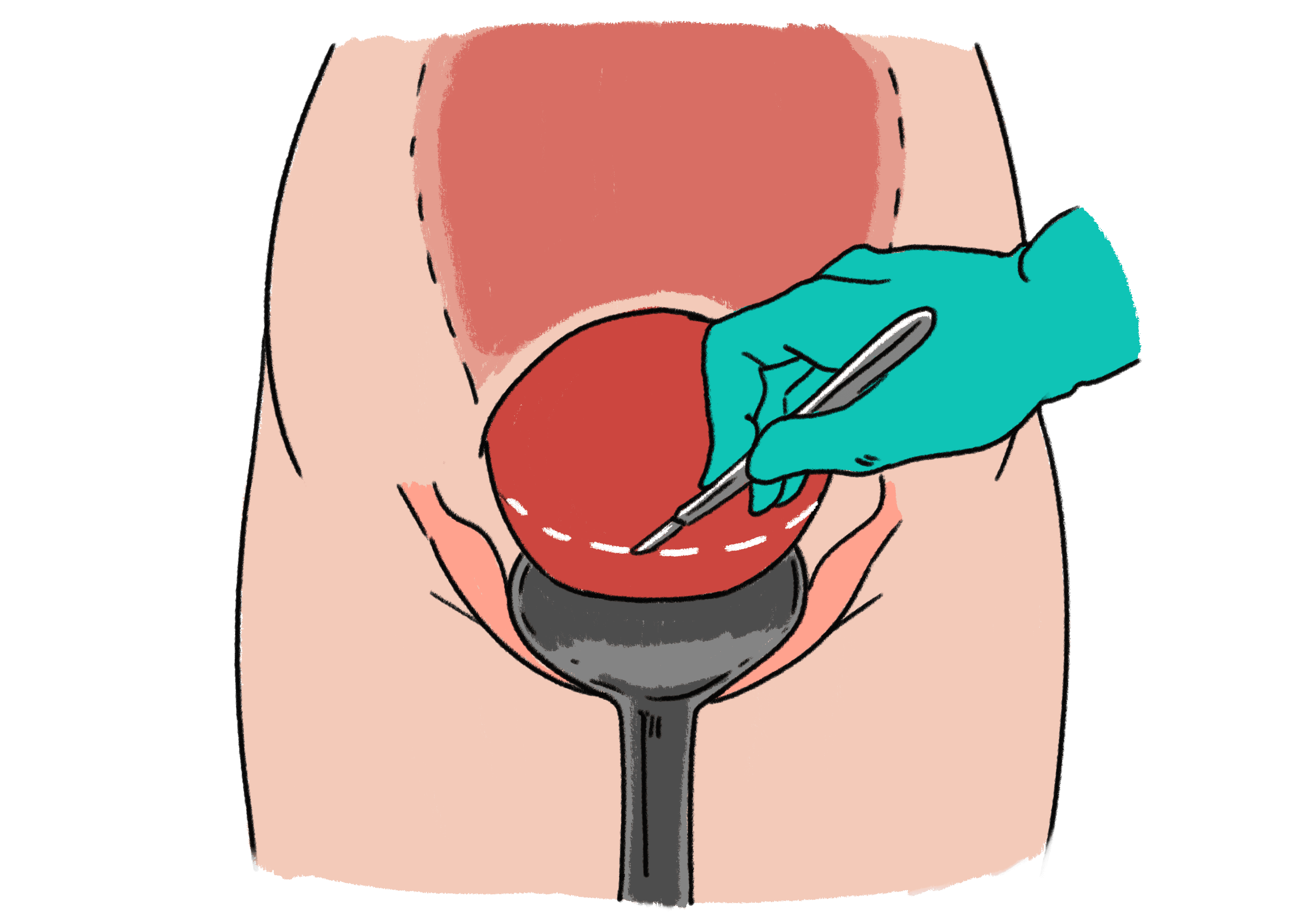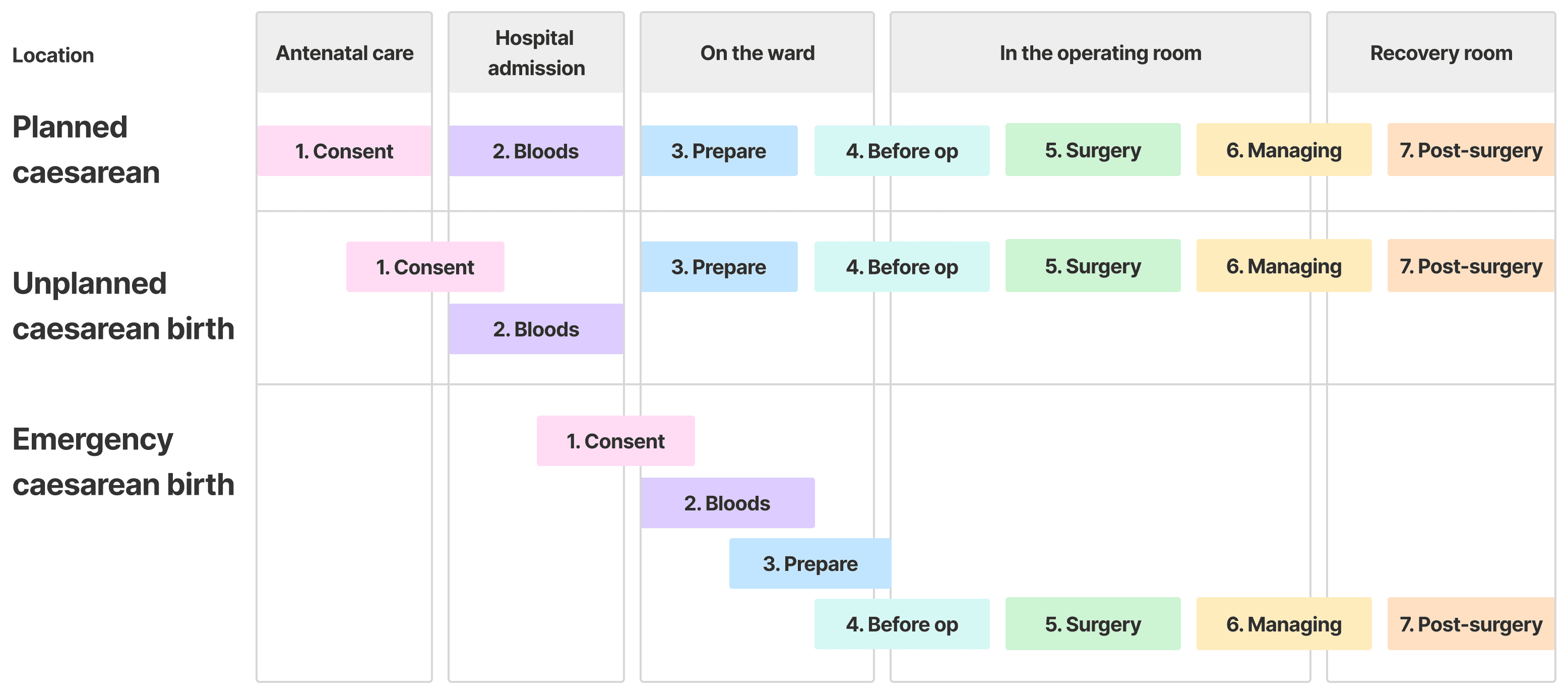What to expect for a caesarean
What to expect during a caesarean birth
Caesarean birth steps: overview
Typically, a caesarean birth takes about 60 minutes, but it varies according to the complexity of the operation.
Consent taken
Blood taken - To prepare for a blood transfusion should you need it, blood may be taken.
Getting ready for surgery - You will need to wear a surgical gown and semi-tight socks to reduce the risk of blood clots. One support person can be in the room with you if you have an epidural or spinal, but not a general anaesthetic.

Before the operation starts
• To reduce the risk of infection: antibiotics will be given and your vagina may be cleaned
• The anaesthetist will ask if you can feel a cold sensation on your abdomen.
• Medical staff will introduce themselves and go through the safety checklist.
• If you don’t already have a urinary catheter, one will be inserted to protect your bladder.
• Continuous monitoring of the baby may continue until the start of the operation.
• Your abdomen will be cleaned and draped.Surgical procedure
• The cut on your abdomen is usually made just below the bikini line, about 10cm long.
• Your baby will be delivered through a cut in the womb.
• Where possible, core clamping will be delayed (optimised). Skin-to-skin contact and early breastfeeding will be encouraged as long as you and your baby are stable.
• A waterproof dressing will cover the incision, and vaginal cleaning performed to remove blood or clots.
Managing bleeding
• Bleeding is a very common complication of caesareans. Medication is routinely administered to keep the uterus contracted and help prevent excessive bleeding.
• Surgical measures may be taken if bleeding continues, such as inserting a balloon in the uterus.
• In rare cases, a hysterectomy may be necessary as a life-saving measure.Immediately after surgery: A checklist will be performed before transferring you to a recovery area. You will remain in recovery until it is safe to move to your room.
Usual timelines:

The process in more detail
Before the operation starts
To reduce the risk of infection antibiotics will be offered to you.
We will consider your known allergies to medications and choose the most suitable antibiotic that is safe for you and your baby.
Your vagina may be cleaned to reduce infection.
After the spinal anaesthesia, the anaesthetist will ask if you can feel a cold sensation on your abdomen using a cold metal probe or cold spray. This is to check that the anesthesia is working and that you will not feel any pain during the surgery
Medical staff will introduce themselves and do safety checklist. This will include introducing their names and roles and will ask you to confirm your name, date of birth and the procedure your are going to have.
If you don’t already have a urinary catheter, one will be inserted to protect your bladder
Continuous monitoring of the baby may continue until the start of the operation.
Your abdomen will be cleaned and draped and a screen will divide you from the surgical team.
Surgical procedure
Just before starting the surgery, a second check of the effectiveness of the anaesthesia will be done by the surgeon.
The cut on your abdomen is usually made just below the bikini line, about 10 cm long. Your baby will be delivered through a cut in the womb.
Where possible, cord clamping will be delayed (optimised) unless there is a need to move the baby immediately to the baby doctor.
Skin-to-skin contact and early breastfeeding will be encouraged as long as you and your baby are stable.
A waterproof dressing will cover the incision, and vaginal cleaning performed to remove blood/clots. A pain killer will be offered to be given in your back passage (bum) where possible.
Managing bleeding
Bleeding is a common complication of caesareans.
Medication is routinely administered to keep the uterus contracted and help prevent excessive bleeding. if excessive bleeding occurs, further medication will be used to help stop the bleeding.
Surgical measures may be taken if bleeding continues, such as inserting a balloon in the uterus. In rare cases, a hysterectomy may be necessary as a life-saving measure.
Immediately after surgery
A checklist will be performed before moving you to a recovery area.
This checklist confirms the procedure is done and identify any concerns or special care needed after surgery
You will remain in recovery until it is safe to move to your room.
References
Caesarean birth. London: National Institute for Health and CareExcellence (NICE); 2024 Jan 30. PMID: 33877751. Available from: https://www.nice.org.uk/guidance/ng192/chapter/Recommendations.
Mavrides E, Allard S, Chandraharan E, Collins P, Green L, Hunt BJ,Riris S, Thomson AJ on behalf of the Royal College of Obstetricians and Gynaecologists. Prevention and management of postpartum haemorrhage.BJOG 2016 ; 124:e106–e149.
Reducing the Risk of Thrombosis and Embolism during Pregnancyand the Puerperium (Green-top Guideline No. 37a). Accessed10/03/2025. Available from: https://www.rcog.org.uk/guidance/browse-all-guidance/green-top-guidelines/reducing-the-risk-of-thrombosis-and-embolism-during-pregnancy-and-the-puerperium-green-top-guideline-no-37a/.